Human Orbital Spaceflights
![]()
International Flight No. 226STS-108Endeavour (17)107th Space Shuttle missionUSA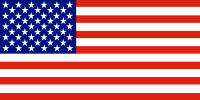 |
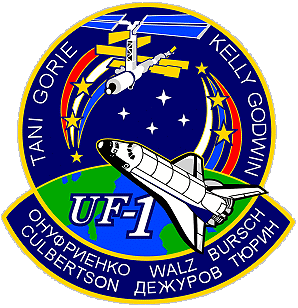 |
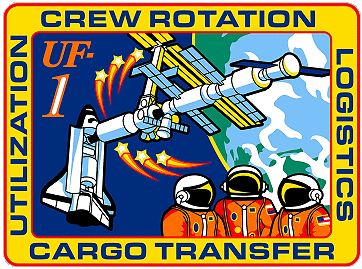 |
 |
||
![]()
Launch, orbit and landing data
walkout photo |
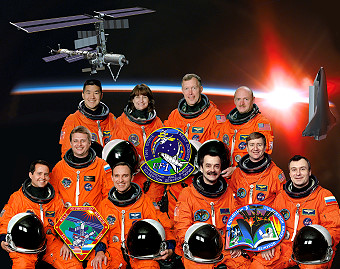 |
|||||||||||||||||||||||||||||||||
alternative crew photo |
alternative crew photo |
|||||||||||||||||||||||||||||||||
alternative crew photo |
||||||||||||||||||||||||||||||||||
alternative crew photo |
||||||||||||||||||||||||||||||||||
Crew
| No. | Surname | Given names | Position | Flight No. | Duration | Orbits | |
| 1 | Gorie | Dominic Lee Pudwill | CDR, IV | 3 | 11d 19h 35m 43s | 186 | |
| 2 | Kelly | Mark Edward | PLT, EV, RMS | 1 | 11d 19h 35m 43s | 186 | |
| 3 | Godwin | Linda Maxine | MS-1, EV-1, RMS, PLC | 4 | 11d 19h 35m 43s | 186 | |
| 4 | Tani | Daniel Michio | MS-2, EV-2, FE | 1 | 11d 19h 35m 43s | 186 | |
| 5 | Bursch | Daniel Wheeler | MS-3 | 4 | 195d 19h 38m 13s | 3081 | |
| 6 | Onufriyenko | Yuri Ivanovich | MS-4 | 2 | 195d 19h 38m 13s | 3081 | |
| 7 | Walz | Carl Erwin | MS-5 | 4 | 195d 19h 38m 13s | 3081 |
Crew seating arrangement
|
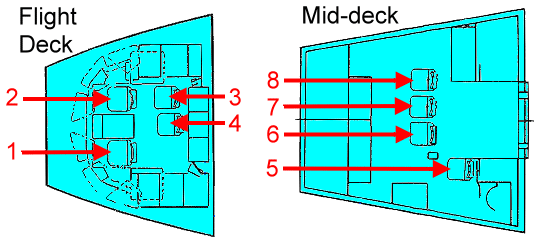 |
|
||||||||||||||||||||||||||||||||||||
Backup Crew
|
 |
||||||||||||||||||||
Hardware
| Orbiter : | OV-105 (17.) |
| SSME (1 / 2 / 3): | 2049-2A (6.) / 2043-2A (7.) / 2050-2A (2.) |
| SRB: | BI-110 / RSRM 82 |
| ET: | ET-111 (SLWT-16) |
| OMS Pod: | Left Pod 04 (24.) / Right Pod 01 (31.) |
| FWD RCS Pod: | FRC 5 (17.) |
| RMS: | 303 (15.) |
| EMU (launch): | EMU No. 3005 (PLSS No. 1005) / EMU No. 3009 (PLSS No. 1009) / EMU No. 3014 (PLSS No. 1014) |
| EMU (landing): | EMU No. 3005 (PLSS No. 1005) / EMU No. 3010 (PLSS No. 1010) |
Flight
|
Launch from Cape Canaveral (KSC) and
landing on Cape Canaveral (KSC), Runway 15. The launch of space shuttle Endeavour on November 29, 2001 was rescheduled for December 04, 2001 to allow sufficient time for the third expedition crew on the space station to successfully complete a spacewalk to clear an KSC on the latching mechanism on the Russian Progress supply vehicle. The launch December 04, 2001 was postponed due to unsatisfactory weather conditions in the KSC area. Launch controllers counted down to the T-5-minute point and held until the remainder of the window expired. The scrub had to be called after Astronaut Office Chief Charles Precourt, flying the Shuttle Training Aircraft, detected precipitation in a cloud mass that moved into the Complex 39 area shortly before launch. A new International Space Station crew, the fourth flight of an Italian-built Multipurpose Logistics Module and a spacewalk to install thermal blankets over two pieces of equipment at the bases of the space station's solar wings were major elements of the STS-108 (ISS-12-UF1) flight of Endeavour. The Italian Multipurpose Logistics Module named Raffaello made its second visit to the space station. It first flew aboard Endeavour on STS-100 in April 2001. It was one of three virtually identical modules that served as pressurized moving vans, bringing equipment and supplies to the space station. A sister module named Leonardo has visited the station twice, on STS-102 in March 2001 and on STS-105 in August 2001. Endeavour's crew spent its first full day in space checking out equipment that will be used for upcoming major activities - the shuttle's robotic arm and the controls and tools used for the final rendezvous and docking with the station. The crew also powered up and prepared the shuttle's docking system and performed several engine firings to optimize the rate at which Endeavour closed in on the station. Endeavour's rendezvous and docking with the International Space Station began with the precisely timed launch of the shuttle on a course for the station. During the first two days of the mission, periodic engine firings gradually brought Endeavour to a point about 9 ½ statute miles (24.6 km) behind the station, the starting point for a final approach to the station. Endeavour reached that point about 2 ½ hours before the scheduled docking time on Flight Day Three. There Endeavour's jets were fired in a Terminal Intercept (TI) burn to begin the final phase of the rendezvous. Endeavour closed the final miles to the station during the next orbit of the Earth. As Endeavour closed in, the shuttle's rendezvous radar system began tracking the station and providing range and closing rate information to the crew. During the approach, the shuttle had an opportunity to make four, small mid-course corrections at regular intervals. Just after the fourth correction, Endeavour was about half a mile (900 meters) below the station. There, about an hour before the scheduled docking, Commander Dominic Gorie took over manual control of the approach. Dominic Gorie slowed Endeavour's approach and flew to a point about 600 feet (182.9 meters) directly below the station. There he began a quarter-circle of the station, slowly moving to a position in front of the complex, in line with its direction of travel. During the rendezvous, Dominic Gorie was assisted by Pilot Mark Kelly in controlling Endeavour's approach. Mission Specialists Linda Godwin and Daniel Tani also played key roles in the rendezvous, with Linda Godwin operating a handheld laser-ranging device and the shuttle's docking system that latched the spacecraft together. Daniel Tani was coordinating checklists and procedures on board the spacecraft. Dominic Gorie flew the quarter-circle of the station, while slowly closing in on the complex. He stopped Endeavour a little more than 300 feet (91.4 meters) directly in front of it. From that point, he began slowly moving directly toward the station's shuttle docking port - moving at a speed of about a tenth of a mile per hour (0.16 kilometers per hour). Using a view from a camera mounted in the center of Endeavour's docking mechanism as a key alignment aid, Dominic Gorie precisely centered the docking ports of the two spacecraft. Dominic Gorie flew to a point where the docking mechanisms was 30 feet (9.14 meters) apart, and pauses for a few minutes to check the alignment. For Endeavour's docking, Dominic Gorie maintained the shuttle's speed relative to the station at about one-tenth of a foot per second (3 centimeters per second), and kept the docking mechanisms aligned to within three inches (7.6 centimeters) of one another. When Endeavour made contact with the station, preliminary latches automatically engaged, attaching the spacecraft to one another. Immediately after Endeavour docked on December 07, 2001, the shuttle's steering jets were deactivated to reduce the forces acting at the docking interface. Shock absorber-type springs in the docking mechanism dampened any relative motion between the shuttle and the station. Once relative motion between the spacecraft had stopped, Linda Godwin secured the docking mechanism, sending commands for Endeavour's mechanism to retract and closed a final set of latches between the shuttle and station. The hatches were opened between Endeavour and the ISS Destiny Laboratory at 22:42 UTC December 07, 2001, enabling the ten crew members to greet one another. On flight day 4 Raffaello was lifted out of Endeavour's payload bay and attached directly to the station's Unity node for the unloading of its cargo, which consisted of the contents of eight resupply stowage racks and four resupply stowage platforms. Much of the material was transferred to the station's U.S. laboratory Destiny. The three Expedition Four crewmembers installed their Individual Equipment Liner Kits in the Soyuz capsule docked to the station, thus becoming members of the station crew. The Expedition Three crew officially ended their 117-day residency on board the International Space Station December 08, 2001 as their custom Soyuz seat-liners were transferred to Endeavour for the return trip home. The transfer of the Expedition Four seat-liners to the Soyuz return vehicle attached to the station marked the official exchange of crews. Yuri Onufriyenko, Carl Walz and Daniel Bursch became as fourth expedition the new resident crew of the ISS. The third expedition crew with Frank Culbertson, Mikhail Tyurin and Vladimir Dezhurov returned to Earth with his mission. The only EVA was performed by Linda Godwin and Daniel Tani on December 10, 2001 (4h 12m) to install insulation on mechanisms that rotate the International Space Station's main solar arrays. The two spacewalkers stopped at a stowage bin to retrieve a cover that had been removed from a station antenna during an earlier flight, and after its return to Earth, may be reused. Linda Godwin and Daniel Tani also performed a "get-ahead", task, positioning two switches on the station's exterior to be installed on a future shuttle mission, STS-110. Two blankets were installed, one on the mechanism that rotates the port side solar array wing, technically labeled the 4B array, and another on the mechanism that rotates the starboard side solar array wing, labeled the 2B array. The blankets are designed to moderate the extremes of heat and cold that the mechanisms experience in space, safeguarding their future operation. Linda Godwin and Daniel Tani carried the blankets out of the airlock with them, each carrying one up to the work site, located at the top of the station's P6 truss, about five stories above the station's modules. After they had left the shuttle airlock, positioned each blanket for translation and gathered tools stowed in Endeavour's bay, Linda Godwin and Daniel Tani attached tethers to the end of the shuttle's robotic arm. As they held on, Mark Kelly maneuvered the arm to lift the spacewalkers to a point part way up the five-story truss structure, as high as the shuttle arm is able to reach. At that point, Linda Godwin and Daniel Tani left the arm and climbed the rest of the way up to the top of the truss to the starboard and port rotating mechanisms, called Beta Gimbal Assemblies. The two spacewalkers worked together to install each custom-designed blanket, turning the first on portside mechanism. Daniel Tani was carrying the port blanket and began to unpack it, first attaching straps that will anchor it to handrails. Then, Daniel Tani began unrolling the blanket, wrapping around the barrel-shaped mechanism, passing it underneath the assembly and handed the blanket off to Linda Godwin. Linda Godwin continued to wrap the blanket around the mechanism and handed it back over the assembly to Daniel Tani, where it was secured to its starting edge using Velcro straps to tighten it in place. A hood unfurled as the blanket was unrolled that was positioned to insulate connectors attached to the mechanism. The spacewalkers then repositioned themselves and repeated the procedure to install the blanket carried by Linda Godwin around the starboard mechanism. Then, crewmembers turned their attention to several miscellaneous "get-ahead" tasks. Mission managers extended Endeavour's flight to a duration of 12 days to allow Endeavour's crew to assist with additional maintenance tasks on the station, including work on a treadmill and replacing a failed compressor in one of the air conditioners in the Zvezda Service Module. The crew unpacked three tons of supplies brought from Earth in the Raffaello cargo module. The transferred items included more than 850 pounds (385.6 kg) of food, 1,000 pounds (453.6 kg) of clothing and other crew provisions, 300 pounds (136 kg) of experiments and associated equipment, 800 pounds (363 kg) of spacewalking gear, and 600 pounds (272 kg) of medical equipment. The module contained two tons of unneeded equipment, food containers, clothes and other cargo, when returned home. In addition to the new crew and the Multipurpose Logistics Module, the shuttle also brought to the ISS in its cargo bay the Lightweight Mission Peculiar Support Structure Carrier with four Get Away Special (GAS) experiments. Another cargo-bay payload was the Multiple Application Customized Hitchhiker-1 (MACH-1), situated between Endeavour's airlock and Raffaello. On flight day 9 Raffaello was unberthed from the space station and returned to Endeavour's cargo bay. Station and shuttle crewmembers reviewed undocking procedures. Before leaving the ISS the altitude of the station was raised to fly well clear of an old Russian rocket body. On December 12, 2001, the crew and Mission Control noted a transient problem with one of the shuttle's three inertial measurement units (IMUs), the primary navigation units for the shuttle. Only two of the three IMUs were on line at the time, with the third unit off line to save electricity. The IMU that experienced a problem, designated IMU 2, and was immediately taken off line and the third IMU brought on line. IMU 2 operated well after that, but it remained off line and was considered failed by flight controllers. The loss of one IMU had no impact on Endeavour's mission, and the other two units operated in excellent condition. Endeavour's middeck carried home the results of several experiments completed during Expedition 3's stay on the station. These included the Advanced Protein Crystallization Facility, the Dynamically Controlled Protein Crystal Growth experiment and cells from the Cellular Biotechnology Operations Support System (CBOSS). Experiments in Endeavour's payload bay were returned for investigators around the world. The Multiple Application Customized Hitchhiker-1 (MACH-1) carried a wide array of experiments, including the Prototype Synchrotron Radiation Detector, the Collisions Into Dust Experiment-2, the Capillary Pump Loop, and the Space Experiment Module (SEM). The SEM carried experiments from Argentina, Portugal, Morocco and Australia, as well as experiments from U.S. schoolchildren. Several other canisters in Endeavour's payload bay also carried student experiments. Once Endeavour was ready to undock, Linda Godwin sent a command that released the docking mechanism. The initial separation of the spacecraft was performed by springs in the docking mechanism that gently pushed the shuttle away from the station. Endeavour's steering jets were shut off to avoid any inadvertent firings during this initial separation. Once the docking mechanism's springs had pushed Endeavour away to a distance of about two feet (61 centimeters), when the docking devices were clear of one another, Mark Kelly turned the steering jets back on and fired them to begin very slowly moving away. From the aft flight deck, Mark Kelly manually controlled Endeavour within a tight corridor as he separated from the ISS, essentially the reverse of the task performed by Dominic Gorie when Endeavour docked. Endeavour continued away to a distance of about 450 feet (137.2 meters), where Mark Kelly began a close fly around of the station, circling the complex 1 ¼ times. Mark Kelly passed directly above the station, then behind, then underneath, then in front and then reached a point directly above it for a second time. At that point, passing above the station for a second time, Mark Kelly fired Endeavour's jets to separate the vicinity of the station. On its return to Earth, Endeavour's crew deployed a small satellite called STARSHINE 2 from a canister located in the payload bay. More than 30,000 students from 660 schools in 26 countries will be tracking STARSHINE 2 as it orbits the Earth for eight months. The students, who helped polish STARSHINE's 845 mirrors, will use the information they collect to calculate the density of the Earth's upper atmosphere. |
EVA data
| Name | Start | End | Duration | Mission | Airlock | Suit | |
| EVA | Godwin, Linda | 10.12.2001, 17:52 UTC | 10.12.2001, 22:04 UTC | 4h 12m | STS-108 | Endeavour - ISS | EMU No. 3005 |
| EVA | Tani, Daniel | 10.12.2001, 17:52 UTC | 10.12.2001, 22:04 UTC | 4h 12m | STS-108 | Endeavour - ISS | EMU No. 3009 |
Note
|
Yuri
Onufriyenko, Carl
Walz
and Daniel
Bursch landed on June 19, 2002, 17:57:41.288
UTC with STS-111 spacecraft. |
Photos / Graphics
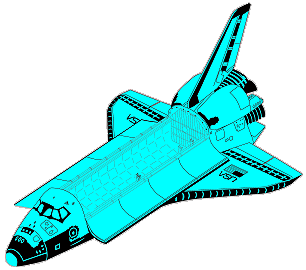 |
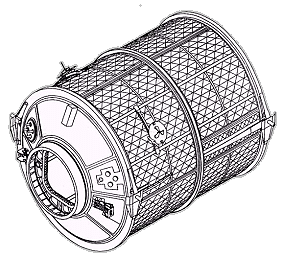 |
 |
 |
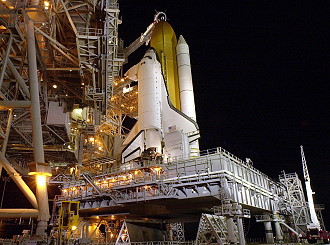 |
 |
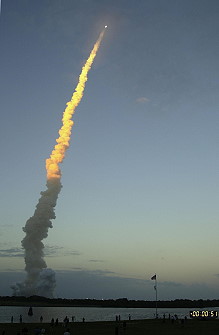 |
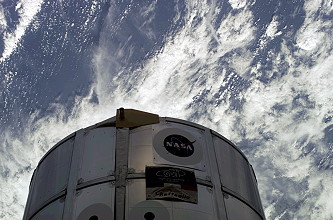 |
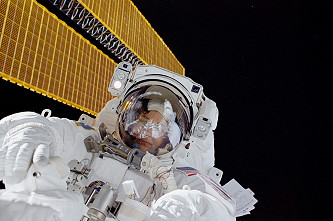 |
 |
 |
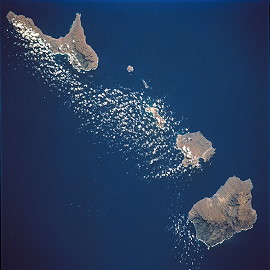 |
 |
 |
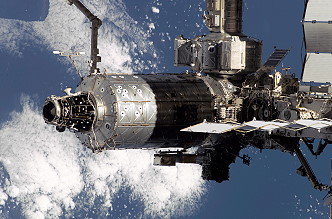 |
 |
more EVA photos |
|
| © | 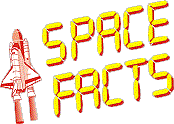 |
Last update on March 27, 2020.  |
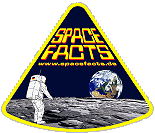 |